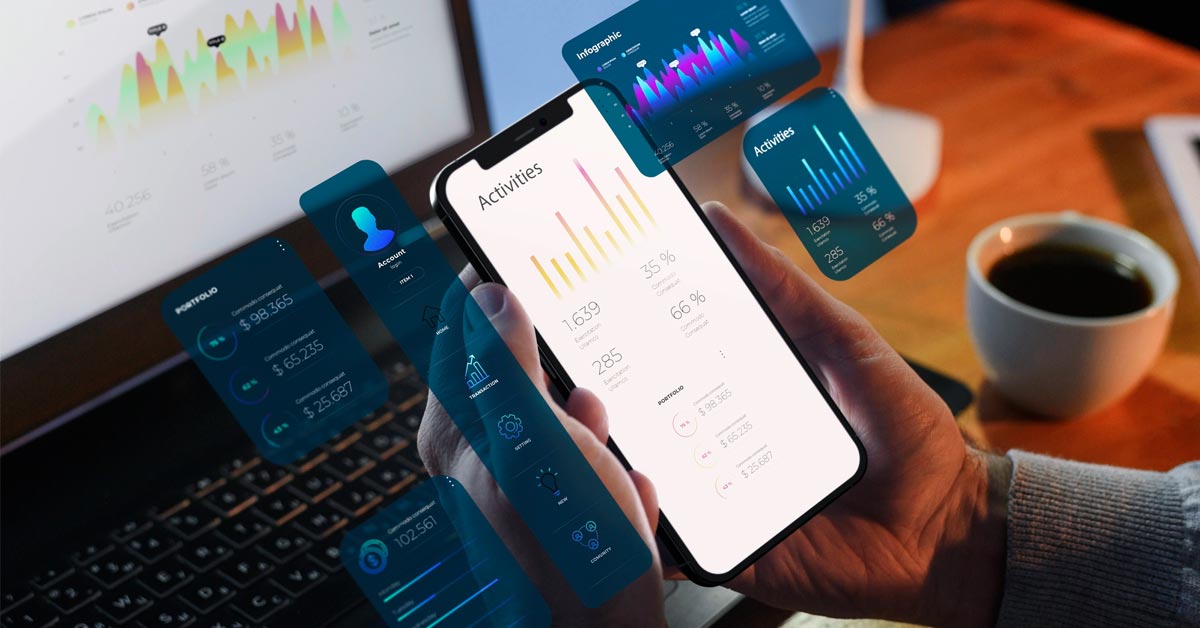Today, mobile applications are a part of human life. People use mobile applications to perform a variety of tasks. As such, the importance of high-quality mobile apps is rising, so companies must ensure seamless transactions and excellent user experience across all categories. To better understand how mobile application testing is done, here we look into behind-the-scenes secrets.
What is mobile app testing?
Mobile application testing is a method of analyzing applications for their usefulness, usability, performance, etc. It can be automated or manual and each of them has dozens more subtypes. This helps ensure that the application you present on the market meets all market needs and expectations.
Why is application testing necessary?
Among the most important options are the following:
- it’s always a human factor included;
- the speed of product creation can bring missed bugs;
- applications may have vulnerabilities and are susceptible to hacking;
- low-quality applications lose reputation and customers;
- partial testing can be done on a limited budget.
It is necessary to understand that during the software development life cycle, errors and unexpected situations can appear at any stage. Therefore, the importance of ensuring the quality of the future project cannot be ignored, and on the contrary, it should receive a higher priority. To identify problems and bugs, a good mobile application testing company always recommends following a checklist that describes steps that you can go through on your own to ensure the high quality of your mobile application.
A step-by-step mobile application testing checklist
1. Functional testing checklist
Functional testing is the main testing activity and demonstrates a guarantee for adequately operating the program’s functions. Also, the program must be checked to see whether it meets the development requirements. Let’s consider the aspects that should be checked during testing:
- Sending and receiving texts while the program is running;
- Rejection of calls while the program is running;
- Reopening the program after an intrusion;
- Compatibility with the desktop version of the program;
- Impact of the application on the device’s battery;
- Sufficient restriction from committing unnecessary actions;
- The location used by the program;
- Layout/UI bug issues;
- Features such as camera, screen resolution, and other similar parts may vary depending on the type or level of the mobile application.
2. Accessibility Checklist
Violation of accessibility laws will result in a hefty fine. Accessibility testing applications makes applications more potent because they can target a broader range of support to users (including users with certain limitations). Testing is carried out in the following aspects:
- Text color contrast and screen magnification;
- Readability of applications;
- Empowering the user interface to achieve a uniform structure;
- Functions of narration or voice accompaniment (Voiceover or Talkback);
- Guaranteed navigation, structured, compatible, detailed and up-to-date;
- Ability to adapt screen readers and change font size.
3. User interaction testing checklist
User interaction testing, or UX testing, evaluates how user-friendly and spontaneous an app is. Testing will allow you to identify existing problems in mobile UX design that affect user interaction. Mobile app testers should examine the user interface (UI) to improve the look and feel of the app. Items that are checked:
- Application analysis to coordinate display support;
- Acceptability of drop-down menus;
- Easy and efficient reading of softkeys;
- Instant display of warning and error texts;
- Adaptability of the program name and logo when the “Program Manager” flag is checked;
- Visual display of user actions in the application in just three seconds;
- Efficient exit selection at any time during program operation;
- Convenient multi-screen navigation.
4. Security Testing Checklist
Customers need to know that their digital connections are safe and secure, which is where security testing comes in. Security testing ensures that sensitive data and information is protected and remains secure. This proves that the application is correctly configured for test use. Let’s consider what elements are checked:
- Fingerprint and face recognition;
- Safe storage of applications and personal data;
- Security of the client’s payment information;
- Protection of web behavior while using the application;
- Encryption of data stored locally on the device;
- Application security failures and error messages;
- Verification of applications and contracts;
- Automatic blocking of applications in case of prolonged unprotected access.
5. Performance Testing Checklist
This testing type measures the application’s responsiveness and adaptability under various conditions. Mobile app performance use automation testing allows you to test your app’s presentation by simulating an increase in the number of simultaneous meetings and interactions with the app. This ensures that the application’s presentation does not deteriorate even when the application is under heavy load. Aspects to be checked:
- Program launch time;
- Viewing the program during the highest load and frequent keyboard input;
- Time to analyze fluctuations and see their impact on the screen within 3-4 seconds;
- Display of applications that require a lot of battery power and the charge of which is below the level;
- Add-ons are quickly installed or uninstalled;
- Display error messages and soft shutdown when a memory problem occurs;
- Application performance when there is a network problem, and an error warning appears.
6. Checklist for compatibility testing
Compatibility testing indicates your application will work on different devices and operating systems. Elements for testing:
- Device-specific functions;
- Mobile display windows;
- Screen resolution and size;
- Functions of the operating system;
- Improvements to the user interface.
Conclusion
Mobile application testing allows you to make sure that the mobile version of the site or application works correctly and provides a customer experience. Since modern conditions show that there are more and more users with mobile devices, and in some countries, they are the overwhelming majority, developers must be prepared for such realities. Any application released to the market must undergo the most stringent checks because sometimes the cost of a mistake can be too high.
ⓘ LAFFAZ is not responsible for the content of external sites. Users are required to read and abide by our Terms & Conditions.









